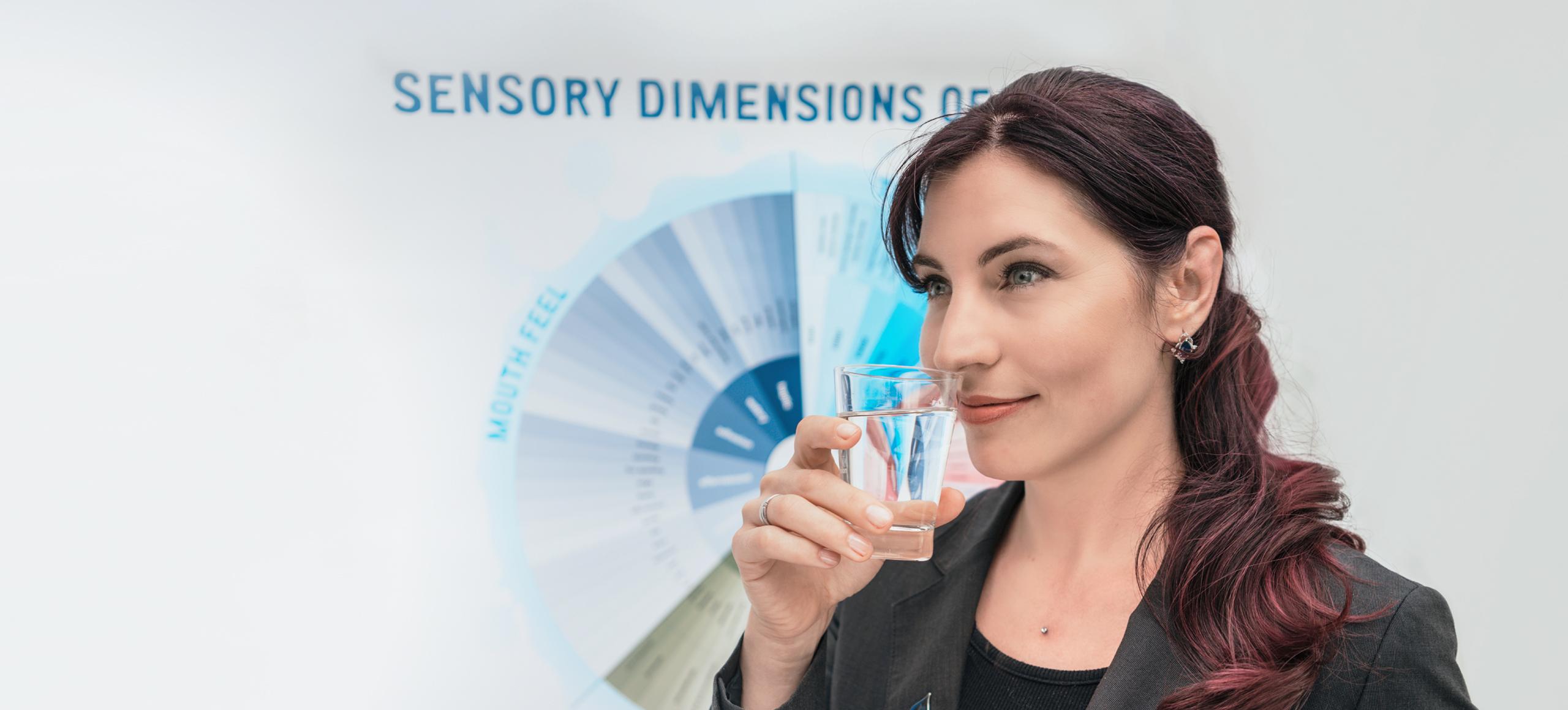When was the last time you actually tasted the water you drink?
The last time you swirled it around in your mouth, closed your eyes and tried to decipher the different types of tastes, odours and even the feeling it left in your mouth? Never? It’s ok, not many people have ever taken their drinking water that seriously. And that’s why we have water sommeliers to do it for us.

Just like the people who specialise in the different aspects of wine, there are people who do the same with water. And they do this because, if you haven’t noticed, water does have a taste, and this can vary depending on which city you’re in, unless it is filtered water which has a consistent taste.
While water – either from a water filter or straight from the tap - is the most important foodstuff we consume, helping us stay adequately hydrated, it can also be the most misunderstood and underestimated.

The water sommeliers at BRITA’s Organoleptic Analysis Department use a sensory gauge called the BRITA Water Wheel to decipher the different tastes in water. This wheel is divided into three dimensions – taste, odour and mouthfeel – to help them tell whether water tastes sour, bitter, sweet or salty and whether it has a metallic, chemical, mouldy or leathery smell. The mouthfeel analysis determines things like whether water is effervescent and its temperature.
That’s how serious BRITA take their water and it’s why they are the world experts in water filtration and water filter equipment.
BRITA’s water sommeliers conduct taste analysis in a state-of-the-art sensory lab that focuses on neutralising the atmosphere so tasters can concentrate on the sensory of water. This means tasting hubs feature artificial light, there are minimal design elements and no noise - in a nutshell, no distractions from the sensory process at hand.
Tasters must also prepare themselves by avoiding strong-tasting foods prior to testing, like chocolate, and not wearing perfume. All this can affect their ability to effectively taste water.
And all this taste analysis is necessary because the composition of water is not as straight forward as you might think. While we enjoy relatively safe drinking water in Australia and New Zealand straight from our taps, there are three main parameters that ultimately affect the taste of water – minerals, organic compounds and substances introduced during water treatment.
Let’s break this down:
- Minerals – occur naturally in water and include calcium, magnesium, sodium and potassium as well as chloride, sulphate and hydrogen carbonate. When you remove all these minerals you end up with distilled water.
- Organic substances – can include plasticisers, residue of plant protection agents like pesticides and solvents as well as natural substances like algae metabolites.
- Water treatment substances – which can be added to treat water, like chlorine for disinfection.
Ideally, the water you drink and have in your tea and coffee would have no organic compounds or water treatment substances, just a perfect balance of minerals.
And the best way to achieve this?
With a high quality water filtration system that can purify your water at the point of use for a consistently great tasting filtered water.

And we’re not just talking about the water you drink, but also the water that goes into making your daily cup of coffee, or the water your barista puts through their coffee machine at your favourite coffee shop. As you can see, the taste of water can be effected by several factors, which ultimately means the taste of your coffee or tea can also be affected. For this reason, the same coffee grounds can end up tasting different depending on which city you are in or even which coffee shop you visit and whether they use water purification equipment for their commercial coffee machine.
Only a water filtration system can provide consistent tasting filtered water.
So, the next time you have a drink of water, see if you can make out any of the tastes or smells mentioned in the BRITA Water Wheel. Better still, see if the same coffee brand you drink varies from city to city, or from one café to another.
You may be surprised by what you taste or smell.




